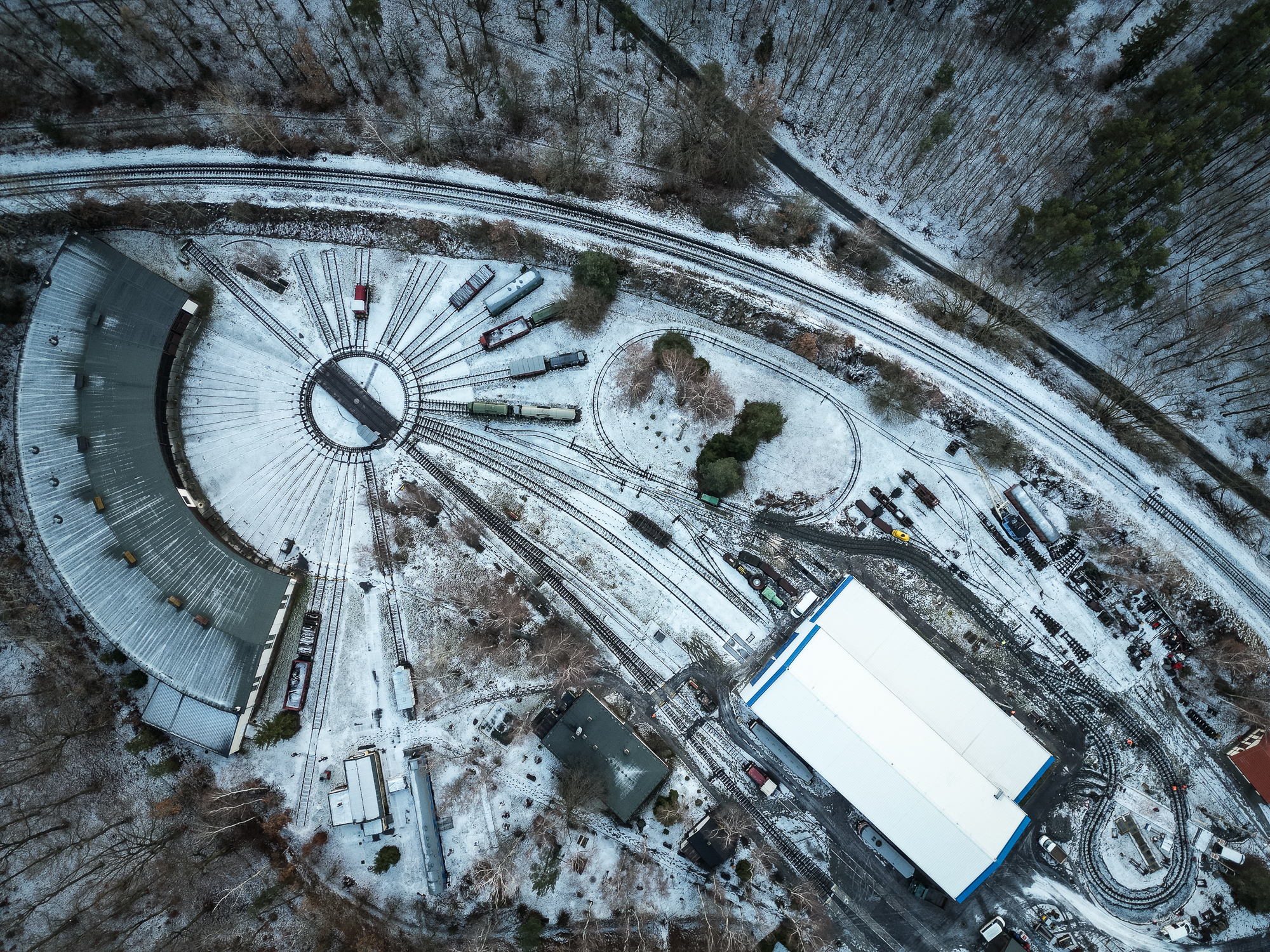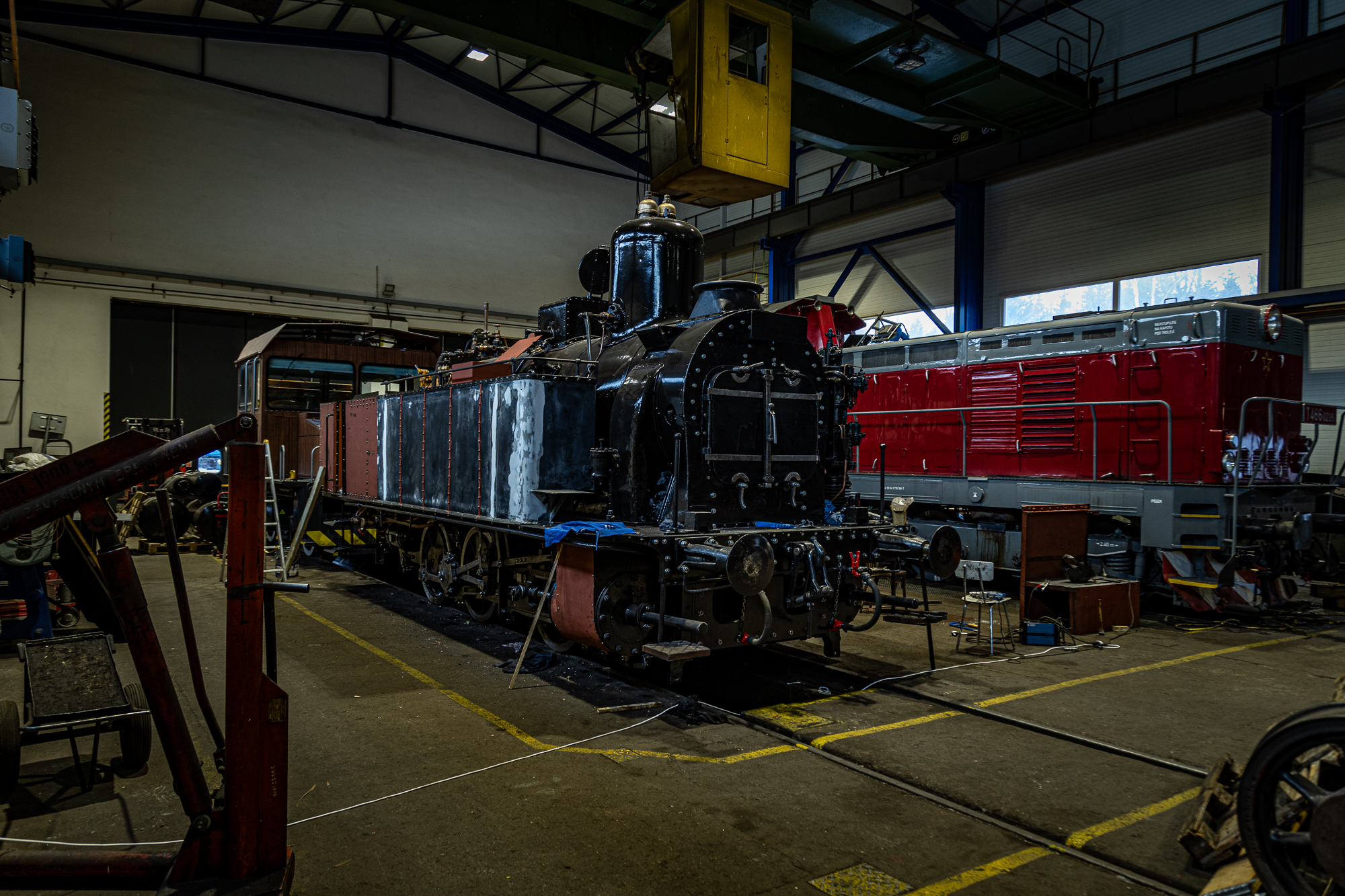Even after the closing of the gates of the Railway Museum of České dráhy in Lužná u Rakovníka at the end of October, the activities in the Centre of Historical Vehicles were not discontinued. The Museum immediately started preparations for the next season in 2024. The Museum’s 600 mm gauge track was extended and maintenance and restoration working activities on the operational historical vehicles in Lužná and other places where České dráhy’s historical vehicles are deposited are also fully underway.
“The train ride on the 600 mm narrow gauge track is very popular among visitors coming to the Museum. That is why we have decided to extend the small oval by dozens of metres of additional tracks, and in the next season the visitors will be able to have a ride on a much longer track. It now leads up to the entrance of the Museum,” says Marek Plochý, Director of the Centre of Historical Vehicles of České dráhy.
The 600 mm gauge rail systems are generally used as industrial railways in factories, mines, quarries and in the past also in agriculture. In the Museum in Lužná u Rakovníka one can see an interesting collection of narrow-gauge industrial diesel locomotives, for example from the closed railways in the Kladno area.

“During the winter season, we are also intensively engaged in the maintenance of operational vehicles and their preparation for the next season, and we also continue with the large-scale restoration projects of historic vehicles, which, due to the complexity of the works to be carried out, requires a longer time and in some cases can take even several years,” adds Marek Plochý.
During these days, for example, the repair of the electrical installations of the T 466.0286 diesel locomotive nicknamed Pilštyk is underway in Lužná u Rakovníka. “Nevertheless, the 313.432 steam locomotive known as Matylda dating back to 1904 is attracting the most attention. The aim is to bring the locomotive back to working order for the 2024 season. We are currently repairing the driver’s cab and preparing the locomotive for painting,” states Marek Plochý, describing one of the most interesting repairs in the repair hall of the Museum depot. In addition to Matylda, the partial repair of the 534.0323 locomotive known as Kremák is also in progress and the repair of the 464.008 steam locomotive (called Bulík) continues as well. After the completion of the repair of Matylda, the finalisation of the repair of the 365.024 steam locomotive from 1923 will be in fully underway.

These days, the public contract for the production of a new steam cylinder for the 475.101 steam locomotive is being evaluated. The expected production time is approximately 8 months. In the meantime, the piping system in the locomotive boiler will be replaced and some minor repairs will be performed. Then nothing should prevent the locomotive from returning into operation.
Unfortunately, the repair capacities of the Centre of Historical Vehicles (CHV) are not unlimited and are fully occupied with the repair of the vehicles mentioned above. That is why the 475.179 Šlechtična (Noblewoman) or 477.0433 Papoušek (Parrot) steam locomotives are still waiting for repairs. The repairs to be carried out by external contractors are financially demanding and, given the limited financial resources, the funding would allow only a very small number of vehicles to be repaired. Therefore, external partners are mainly used for the supply of specialised parts and works which cannot be provided in the CHV workshops, e.g. the production of steam cylinders.
From the vehicles of the younger generation, the repair of the historical rail car (831.043 or newly known as M262.1011) is approaching its completion. In addition to repairs to the vehicle’s body and roof, floor, interior details and toilet, the rail car will also receive a new paint application and appropriate period markings. As far as diesel locomotives are concerned, major repairs are currently underway on 749.250 (Bardot) and 721.091 (Hector).
One should not forget about the electric traction either. Last year in Brno we took over the electric unit of the 560 class to the status of historical vehicles. Our local colleagues are preparing the unit for this year’s season, when we would like to show it on the occasion of several events, including a trip to Slovakia. Unfortunately, even this unit, like the ČD operational vehicles, has been targeted by sprayers and therefore its historical paintwork has suffered considerably.
The Centre of Historical Vehicles also takes care of cargo wagons and passenger carriages. The workshop is now repairing the so-called Zetka, which is a Ztr-c class carriage which has been dismantled to the last screw. Only the metal frame of the carriage has remained there, and it will be sandblasted, repaired, painted and given a brand-new wooding system. The same care is given to the running gear of the carriage too. During the repair, a water tank will be built into the load storage area to ensure an extension of the action range of the steam locomotives known as “tender locomotives” during nostalgia runs. Tender locomotives carry a limited supply of water in tubs which are usually installed alongside the boiler.
In the winter months, the overhaul of three Ce class carriages, called Rybák after the designer of the single-axle bogies used, was completed by an external contractor. The Rybák carriages were produced between 1938 and 1949 and today it is impossible to imagine nostalgic rides without them. These days, a set of carriages called Ostravan will also return from repairs, where we mainly dealt with the installation of locks to lock the carriages to protect them from vandals, followed by repairs to the water circuits and many other small things. Unfortunately, vandals do not avoid historical vehicles either. A historical Bpjo double decker unit will be transported to the workshops of an external contractor in the upcoming period. The aim will be to thoroughly inspect the entire unit and to remove minor defects.
The machine crews and railway nostalgia fans dedicate a lot of their time to the maintenance of operational historical vehicles of České dráhy, which are under the administration of the Centre of Historical Vehicles, in other places in Bohemia and Moravia as well. Maintenance and small repairs are currently carried out in Valašské Meziříčí on the 423.041 class locomotive Velký bejček (Big Bull), in Olomouc on the popular green tender 464.202 class locomotive Rosnička (Tree Frog), which incidentally is the last type of the steam locomotive designed in Czechoslovakia, and in Praha Vršovice they take care of the 434.2186 class locomotive Čtyřkolák (Four-Wheeler).
It would take a long time to list all the vehicles and regions. “Big thanks belong to all our colleagues and enthusiasts for their help in saving these historical unique machines and vehicles. Without our joint efforts, it would be impossible to ensure the operation of historical railway vehicles,” emphasises Marek Plochý.
The 2024 season in the Railway Museum in Lužná u Rakovníka will start on 27 April. The season of nostalgic rides usually starts in May and ends with St. Nicholas rides at the beginning of December. Further information will be published on our website www.cdnostalgie.cz or on the ČD Nostalgie Facebook page.